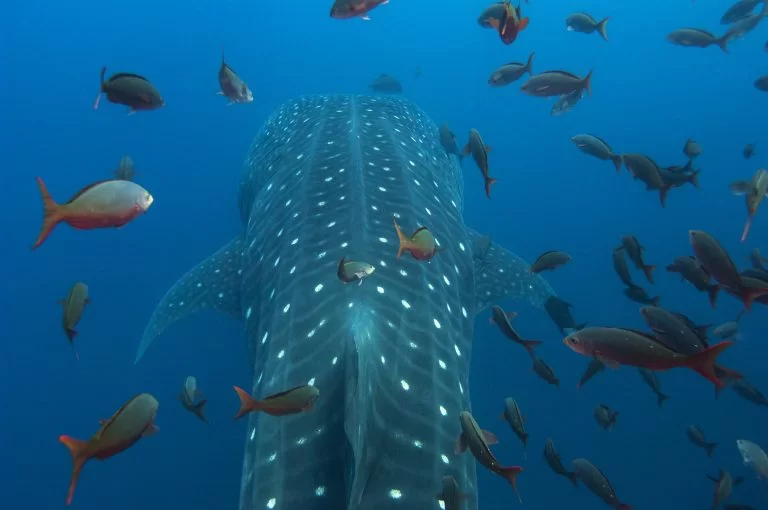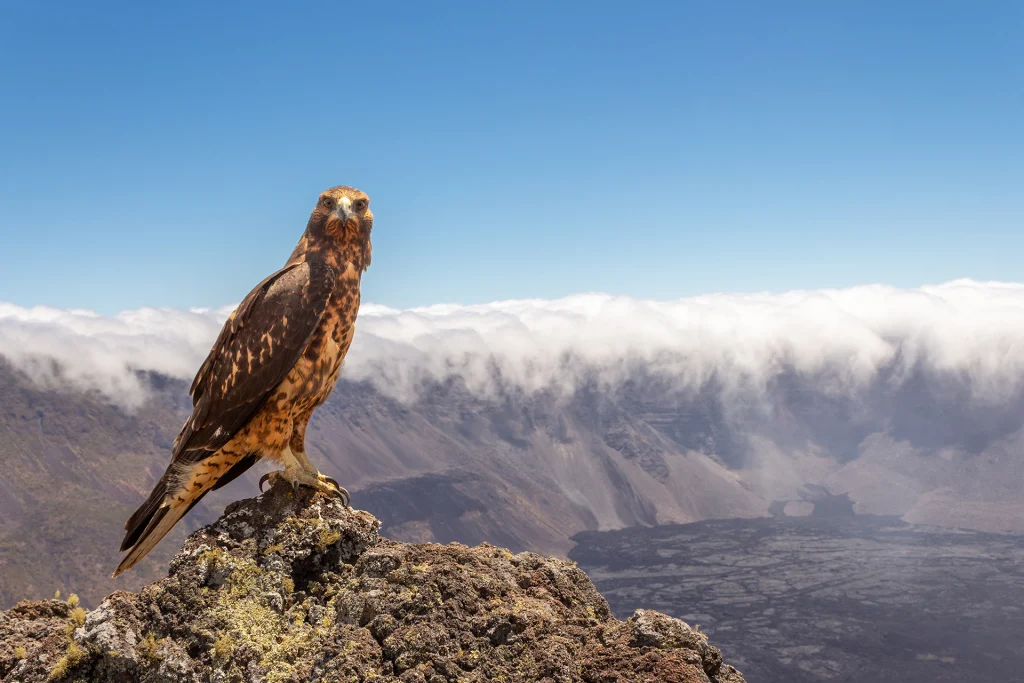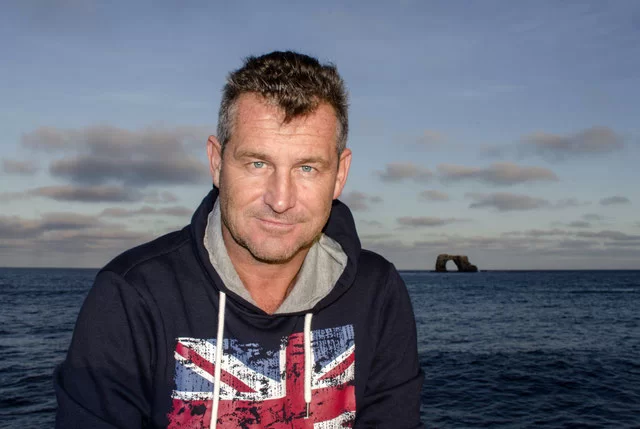
Galapagos Conservancy offers grants to support sustainability and/or conservation activities to preserve the Galapagos Islands. This is in partnership with our partners.
Jonathan R. Green is our permanent Galapagos resident. He is conducting research with the Galapagos Whale Shark Program. This will provide reference data on the reproductive status and movements in Galapagos for conservation management.
Plankton-adherent whale sharks can consume more than 20 kg per day. If ocean waters are rich with plankton it means that the ecosystem is healthy and full of nutrients. Whale Sharks love plankton-rich waters, which is an indicator that the marine ecosystem is healthy.
Whale Sharks regulate ocean plankton levels, and stop these microscopic organisms from growing unrestricted. This could lead to a decrease in ocean environment. It is crucial to have as much information as possible in order to help conserve this iconic species.
- Where were you born and how long have been living in Galapagos? I am originally from the UK, but I grew up in France and Spain before moving to Galapagos in 1998.
- Please help us understand this species.Some people mistakenly believe that whale sharks can be confused with mammals. They are the largest sharks and the most powerful. Although they aren’t mammals, they can incubate eggs and give birth to young. They are often mistaken for whales, perhaps due to their large size.

- What is it that makes you so passionate about Whale Sharks and why? Since my first encounter with them, they have fascinated me. I was captivated by the idea of meeting a living dinosaur as a child. Whale sharks have been roaming the oceans for more than 70 million years. These sharks are enormous and the most powerful of all sharks, yet they are gentle giants.
- Let’s concentrate on the project. Understanding a species is only possible if we know the facts about where it breeds, where its young live, what habitats they use, and how they interact with each other. Without understanding them, we can’t hope to save them in the long-term or short-term. It is urgent to study this species, which is in imminent danger of disappearing. The Whale Sharks that visit Galapagos seem to be mostly females. This is a totally different situation than other aggregations around the world. This gives us an opportunity to find out more about their reproductive status.
- What is it like to work with animals such as Whale Sharks? It is both thrilling and daunting. We are always learning new techniques and adapting our methods to meet new challenges. It has been one the most enriching and rewarding aspects of my life. I owe it to the environment and oceans that have given so much to me. I want to give back to the planet. I hope I can make a difference for a healthier ocean, where sharks are not being killed in their millions every year.
- What is the most exciting thing about the Whale Sharks? They are one of the great mysteries of the Oceans. It is an experience that very few people can enjoy.
- What makes Whale Sharks difficult to study? Because of their size, not many field techniques can be used. They can also be found in vast ocean areas and live far away from the places that humans can access to study them.
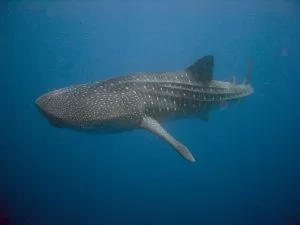
- How is it that the Whale Shark’s reproductive behavior is so difficult to understand? No one has ever seen a Whale shark mate or give birth. These events are unknown. Their lives are spent mostly in the pelagic oceanic regions, which is often far from their sight. It is impossible to track them with modern technology as they dive to great depths, and stay submerged for long periods.
- What made you choose the Galapagos Islands to be your home base for research on Whale Sharks in the Galapagos Archipelago? They offered me the chance to study them, but no one was doing it so that I started what I thought would only be a brief field investigation. It was more than 15 years ago, and we still have a lot to learn before we can answer all of the questions.
- What are Whale Sharks’ migration patterns?Whale Sharks move from one place to another, sometimes in a multi-year cycle. These movements may be seasonal or annual, but we believe they are linked to basic needs, such as food and reproduction. They travel to search for food and mates, just like other species. We used satellite tracking devices for their departure from Darwin Island. This enabled us to connect with some areas in the Eastern Tropical Pacific. They often travel towards Ecuador’s mainland and then south to the Peru continental shelf. We believe that this may be food related because the water in this area is very rich in plankton. It is possible that they will find their mates in this region. It is not clear where they will give birth or where they will live their first years.
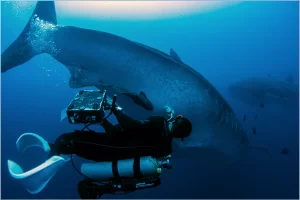
- How has your research progressed since the 2018 Galapagos Whale Shark Project’s first ever ultrasounds of Whale Sharks? It was a huge achievement to obtain the first ever successful ultrasound data of Whale Sharks in a swimming environment. Although the data did not show embryos, it showed egg follicles. This is not conclusive evidence that this is a pregnancy test. This is an acceptable procedure for fieldwork and we expect to get more information using ultrasound. We hope to resume fieldwork in July due to the short time available and the interruption caused by the pandemic.
- Three Galapagos Whale sharks females were studied to unravel one of the ocean’s most mysterious mysteries: how they mate, and where they give birth. We were able to tag 8 female Whale Sharks and 1 juvenile this season. These tags yielded incredible data, but unfortunately three satellite tags were transmitted from land. One from Peru and two from Ecuador. This has revealed a disturbing degree of interaction between the species and fishing fleets from both nations. These SPLASH10 tags cannot float so they must be removed from the animal before being transported to land by humans. We are now trying to determine if this is due to the entanglement or illegal landing of Whale Sharks with their fishing gear. All the tracks of all the tagged Whale Sharks allow us to create a detailed “map”, which shows the location and movement of each Whale Shark within the ETP. The new SPLASH10 tags provide depth and dive data that allow us to better understand habitat use, possible foraging, and breeding behavior.
- You mention in your investigation that there’s a new urgency in recent decades, animals are being lost at a rate never before seen in human history.Whales Sharks have been bycatch since the 1980s, but they’ve become a targeted species. This trend has intensified in the 1990s, and into the new millennium. Whale Shark oil, and fins are becoming more valuable as other shark species lose their indiscriminate fishing.
- IUCN has listed the Whale Shark as Endangered. What are the trends in population? What are the main threats to the species’ population? Global data suggests a general decline of all Whale Shark populations currently being studied or monitored. However, like many other mega-marine faunas, precise figures are difficult to determine. All threats include anthropogenic, illegal fishery, bycatch, entanglement and vessel strikes. Many of these invisible and silent killers go unnoticed and are often not reported.
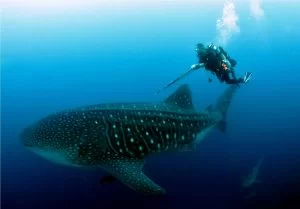
- Concerning your new study, how will the data you have collected about the reproductive status and movements in Galapagos archipelago Whale Sharks be used to conserve them? The data we began collecting more than a decade ago was already incorporated into the GMR’s management policies and plans. Satellite data proved conclusively that connectivity exists with other island ecosystems, such as Cocos or the ETP. This data, along with other scientists’ work was used to support the extension and creation of the Galapagos-Cocos Swimway. We hope to identify and indicate the areas that are crucial to the survival of the species. This includes where they forage, breed, and where they give birth. While we are still unable to use the technology available and the limitations of field work, we recognize the importance of long-term research.
- What’s the status of your investigation with the Galapagos Conservancy? The project has made significant progress in data wrangling, and the creation of metadatabases to analyze the movement ecology and diving behavior for Whale Sharks over the past decade. The next months will be used for data analysis and manuscript preparation. Also, the project is moving forward in collecting photo-identifications from divers, fishermen, passengers, and scientists within the reserve. We have 39 new encounter reports, 16 of which were assigned to new individuals. There was also one re-sighting. Re-sighting was reported for the first time in Galapagos on July 2008, and then re-sighted in January 2022. COVID-19 travel restrictions seem to have a negative impact on the work that will be done in the Galapagos with ultrasounds. Due to internal regulations, our Okinawa-Churaumi partners cannot travel internationally. This is a significant setback for our research goals this year, as they are the only people who have been trained to perform underwater ultrasounds on whale Sharks. The team will prioritize taking blood samples for the reproductive study. This is to determine if there is a possibility of pregnancy. Talks have also been held with the local community via various platforms.
- Have you dived near this magnificent species many times? Do you have any memorable experiences with them? The first time I saw one after a dive was in 1990 is something I will never forget. That was the turning point in my life that led me to create a Whale Shark study project. Every encounter I have with a Whale Shark has been an amazing experience. It is a great feeling to share this experience with others divers and witness the excitement that comes from their first encounter. This is one of my greatest blessings. Recently, I felt that I could give back physically by removing a large piece of fishing net from the pectoral fins of Whale Sharks. This was an extremely dangerous and potentially fatal task.
- What message would you send to the world about this amazing species, the Whale Sharks.Whale Sharks are a living dinosaur that has existed on the planet for over 70 million years. Their future is at stake as they are an iconic marine species and living dinosaur. They have the same rights to survive, thrive, and exist as humans. As such, they should be protected, respected, and allowed to continue for as long as possible in a healthy environment. Healthy oceans are just as important to our planet’s future and our survival as the air we breathe.
The project’s first four months have seen significant progress in data wrangling, and the creation of metadatabases to allow for analysis of movement ecology and diving behaviour of whale sharks over the past decade. The next few months will be used for data analysis and manuscript preparation.
The project also made significant progress in collecting photo-identifications from divers, fishermen, passengers, and scientists within the reserve. We have 39 new encounter reports, 16 of which were assigned to new individuals. There was also one re-sighting. Re-sighting was reported for the first time in Galapagos on July 2008, and then re-sighted in January 2022.
